
Number 99 Squadron is a squadron of the Royal Air Force which operates the Boeing C-17 Globemaster III strategic/tactical transport aircraft from RAF Brize Norton.
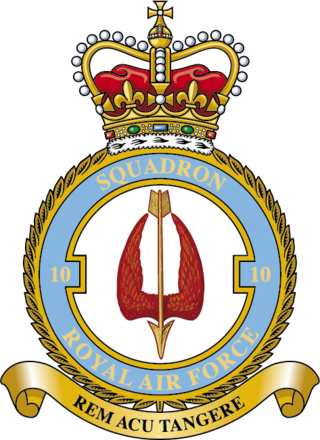
Number 10 Squadron is a Royal Air Force squadron. The squadron has served in a variety of roles over its 90-year history. It currently flies the Airbus Voyager KC2/KC3 in the transport/tanker role from RAF Brize Norton, Oxfordshire.

Royal Air Force Dishforth or more simply RAF Dishforth is a former Royal Air Force station near to Ripon in North Yorkshire, England. Opened in 1936, the base was used as a bomber airfield during the Second World War with both British and Canadian squadrons flying missions from the airfield. After the war, the base was used by various squadrons and training units before being disposed of in 1992 and handed over to the Army Air Corps.

No. 7 Squadron of the Royal Air Force operates the Boeing Chinook HC6 from RAF Odiham, Hampshire.
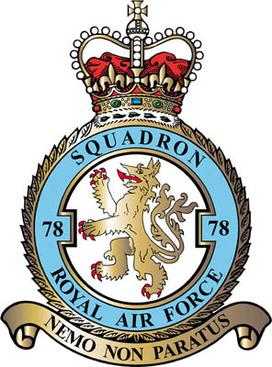
No. 78 Squadron of the Royal Air Force, is the squadron number plate of RAF (Unit) Swanwick based at London Area Control Centre, Swanwick, Hampshire. The squadron was allocated the role in early 2021.
No. 75 Squadron of the Royal Air Force operated as a bomber unit in World War II, before being transferred to the Royal New Zealand Air Force in 1945.
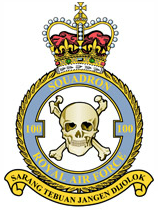
Number 100 Squadron is a former Royal Air Force squadron. It last operated the British Aerospace Hawk T1, providing 'aggressor' aircraft for air combat training from RAF Leeming in North Yorkshire, UK.
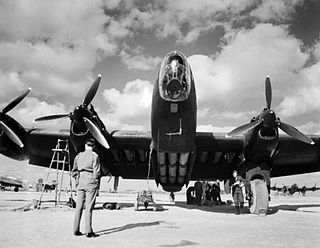
No. 148 Squadron of the Royal Air Force has been part of the RAF since the First World War.
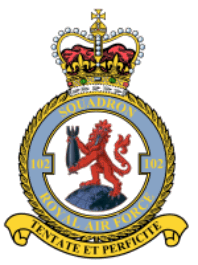
No. 102 Squadron was a Royal Air Force night bomber squadron in the First World War and a heavy bomber squadron in the Second World War. After the war it flew briefly as a transport squadron before being reformed a light bomber unit with the Second Tactical Air Force within RAF Germany. Its last existence was as a Thor strategic missile unit.

No. 463 Squadron RAAF was a Royal Australian Air Force heavy bomber squadron during World War II. The squadron was formed in the United Kingdom in late 1943 from personnel and aircraft allocated from No. 467 Squadron RAAF. The squadron was equipped with Avro Lancaster bombers and flew its first raids on Germany immediately after being formed. Operating as part of RAF Bomber Command No. 463 Squadron conducted raids against cities, industrial facilities and military targets in Germany, France and Norway throughout 1944 and until the end of the war in May 1945. Following the war, the squadron evacuated Allied prisoners of war from Europe until it was disbanded in late 1945.

No. 467 Squadron RAAF was a Royal Australian Air Force bomber squadron, active over North West Europe during World War II. Formed in November 1942 as an Article XV Squadron in Britain, the squadron was notionally an Australian squadron under the command of the Royal Air Force, and consisted of a mixture of personnel from various Commonwealth nations. After becoming operational in early 1943, the squadron flew operations in Occupied Europe until the end of the war flying Avro Lancaster heavy bombers. It was scheduled to deploy to the Far East to take part in further operations against Japan, but the war ended before it could complete its training and the squadron was disbanded in September 1945.

Number 207 Squadron is a historic bomber squadron and, latterly, a communications and flying training squadron of the Royal Air Force. It was announced on 5 July 2017 that No. 207 Squadron will again reform to become the Operational Conversion Unit for the UK F-35B Lightning Force and will return to RAF Marham in Norfolk where it was last based in 1965. No. 207 Squadron arrived at RAF Marham with six F-35Bs on 16 July 2019 before officially standing up on 1 August.
No. 97 Squadron, was a Royal Air Force squadron formed on 1 December 1917 at Waddington, Lincolnshire.

No. 106 Squadron RAF was a Royal Flying Corps and Royal Air Force squadron active from 1917 until 1919, throughout World War II and during the Cold War from 1959 until 1963.
No. 158 Squadron RAF was a World War I proposed ground attack squadron that did not become operational in time to see action, and a World War II bomber squadron. After World War II had ended in Europe the squadron operated in the transport role until disbandment in December 1945.
Number 76 Squadron was a squadron of the Royal Air Force. It was formed during World War I as a home defence fighter squadron and in its second incarnation during World War II flew as a bomber squadron, first as an operational training unit and later as an active bomber squadron. With the end of the war the squadron converted to the role of transport squadron, to be reactivated shortly in the bomber role during the 1950s. From 2007 to 2011, it was a training unit, equipped with the Short Tucano at RAF Linton-on-Ouse.
Number 58 Squadron was a squadron of the Royal Air Force.
No. 218 Squadron RAF was a squadron of the Royal Air Force. It was also known as No 218 Squadron after the Governor of the Gold Coast and people of the Gold Coast officially adopted the squadron.
No. 170 Squadron RAF was a Second World War Royal Air Force squadron that operated the North American Mustang in the fighter-reconnaissance role and later the Avro Lancaster as part of Bomber Command.
No. 4 Group was a Royal Air Force group, originally formed in the First World War, and reformed in the wake of the Second World War, mostly part of RAF Bomber Command, but ending its days in RAF Transport Command.













